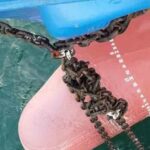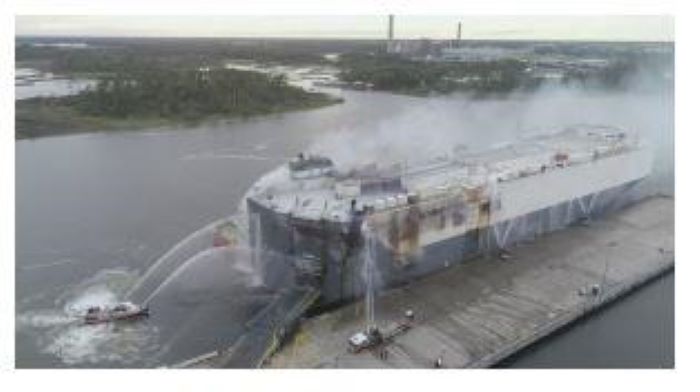Real Life Incident: Hot Sludge Burns Crewmember
The main engine on a bulk carrier was switched over to very low sulphur fuel oil (VLSFO) to comply with regulations. Once the engine was operating on VLSFO, the sludge discharge line of the oil separator frequently clogged, generating a ‘separator fail’ alarm on the alarm panel. To mitigate the problem, it was decided that the oil separator was to be cleaned twice a day.
In the evening hours, the engineer on duty received a ‘separator fail’ and a ‘fuel oil bowl leak’ alarm on the computer. The vessel was rated as UMS (unattended machine space) and there were no engineers in the machinery space at the time. Experience to date indicated that this alarm was a consequence of the contamination and clogging of the separator bowl at the discharge line. As per procedures, the engineer informed the bridge that he was going to the engine room.
Procedures also specified that two crew should always enter the engine space together. Despite this, the engineer on duty entered the space alone, and did not put on his coveralls and gloves as he entered the engine room – again contrary to procedures. Having transferred to the standby separator and shut the alarming separator, he opened the plug of the inspection hole of the sludge discharge line to verify the condition. The discharge line was completely blocked, so this did not decrease the pressure between the blockage and the bowl opening. Hot (40C) sludge oil gushed out of the inspection hole and covered the engineer’s arms and legs.

The victim called for assistance and other crew arrived. They attempted to wash the sludge off the engineer’s hands at the washstand but the sludge was sticking to his skin. He was escorted to the ship’s hospital and pain-killers were prescribed. After consultation, the Master decided to evacuate the victim at the nearest port, approximately 250nm from the vessel’s location. In the shore hospital, it was 12% of the victim’s skin surface had been covered in sludge, mostly on his arms and legs.
The investigation found, among other things, that;
A long sleeved overall and leather gloves could have greatly reduced the amount of sludge that contacted the victim’s skin.
The regular clogging of the fuel oil separator on board was probably due to the cold flow properties of the particular blend of VLSFO in use. Mitigating action was taken to keep the process running by cleaning the oil separator twice a day, but the source of the problem had not been dealt with. A more detailed analysis of the specific blend of VLSFO, and in particular its cold flow properties, could have solved the separation problems with this blend of fuel.
Cleaning the separator was not a standard job on board. It was decided to carry this out twice a day to deal with the new batch of fuel, but no further risk assessment or safety measures were implemented to mitigate the risks associated with this job.
Lessons learned
- Expect the unexpected – in this case, that the discharge line was completely blocked.
- The discharge line was not equipped with a pressure gauge, since the sludge inside the discharge line is normally not under pressure. It was unusual and unexpected that the sludge was under pressure after switching off the separator.
- This is yet another example where lack of proper PPE was an aggravating factor for the negative consequences.
Reference: The Nautical Institute
Do you have info to share with us ? Suggest a correction
About Author
Marine Insight News Network is a premier source for up-to-date, comprehensive, and insightful coverage of the maritime industry. Dedicated to offering the latest news, trends, and analyses in shipping, marine technology, regulations, and global maritime affairs, Marine Insight News Network prides itself on delivering accurate, engaging, and relevant information.

About Author
Marine Insight News Network is a premier source for up-to-date, comprehensive, and insightful coverage of the maritime industry. Dedicated to offering the latest news, trends, and analyses in shipping, marine technology, regulations, and global maritime affairs, Marine Insight News Network prides itself on delivering accurate, engaging, and relevant information.
- Real Life Incident: Vessel Collision in Good Visibility
- Real Life Incident: Severe Injury To Deck Crew While Leaving Berth
- Real Life Incident: Departure Damage in Very Restricted Waterway
- Real Life Incident: Low Situational Awareness Has High Impact Consequence
- Real Life Incident: Fouled Anchor in a Designated Anchorage
- Real Life Incident: Fire On Barge Carrying Scrap Metal Causes $7 Million Worth Of Damage
Latest Case studies Articles You Would Like:
Subscribe To Our Newsletters
By subscribing, you agree to our Privacy Policy and may receive occasional deal communications; you can unsubscribe anytime.















